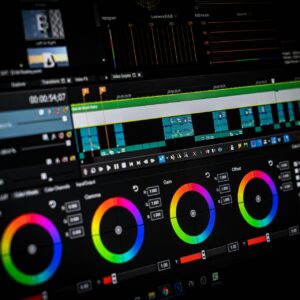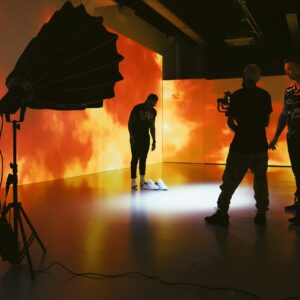Lighting plays a crucial role in creating captivating and professional-looking marketing videos. It has the power to enhance the visual appeal, set the mood, and effectively convey your message to the audience. Whether you’re shooting a product demonstration, an interview, or a promotional video, understanding how to make the best use of lighting can greatly improve the quality and impact of your marketing video production. In this article, we will explore some key tips to help you optimize lighting for your marketing videos.
1. Natural Light vs Artificial Light
The first decision you need to make is whether to use natural light or artificial light. Natural light can create a soft and authentic look, especially when shooting outdoors or near windows. However, it can be unpredictable and vary throughout the day. If you’re shooting indoors or need more control over the lighting conditions, artificial light sources like studio lights or LED panels can be a reliable option. They provide consistent illumination and allow you to shape and manipulate the light to suit your needs.
2. Three-Point Lighting Setup
The three-point lighting setup is a classic technique used in video production to create a balanced and visually pleasing look. It consists of three main components: the key light, the fill light, and the backlight. The key light is the primary light source that provides the main illumination on your subject. It should be positioned at a 45-degree angle from the subject to create dimension and depth. The fill light helps reduce shadows and balances the key light by filling in the areas that are not directly lit. It is typically placed opposite the key light. The backlight is positioned behind the subject to create separation and add a subtle halo effect. This setup helps create a professional and polished look for your marketing videos.
3. Soft Lighting for a Flattering Look
Soft lighting can be highly beneficial when shooting people or products. It helps minimize harsh shadows and creates flattering and even illumination. To achieve soft lighting, you can use diffusers, and softboxes, or bounce the light off reflective surfaces. Soft lighting works well for beauty shots, interviews, and any scenario where you want to highlight the details and textures of your subject.
4. Consider the Color Temperature
Understanding color temperature is essential for achieving the right mood and tone in your marketing videos. Color temperature refers to the warmth or coolness of light and is measured in Kelvin (K). Daylight is considered a cool light source with a higher color temperature (around 5500K-6500K), while indoor lighting tends to be warmer (around 2700K-3500K). Ensure that your lighting sources match the desired color temperature for your video. Consistency in color temperature throughout your shots will create a cohesive and professional look.
5. Experiment with Lighting Techniques
Don’t be afraid to experiment with different lighting techniques to add creativity and visual interest to your marketing videos. You can use techniques like silhouette lighting, where the subject is backlit to create a striking outline, or dramatic lighting with strong contrasts to evoke a specific mood. Consider using colored gels or filters to add a unique and eye-catching effect to your videos. Just remember to ensure that the lighting techniques align with your brand identity and the message you want to convey.
6. Test and Adjust
Lighting setups can vary depending on the location, subject, and desired outcome. It’s crucial to conduct tests and make adjustments before shooting your marketing video. Take the time to set up your lights, observe the results, and make the necessary modifications to achieve the desired look. Don’t hesitate to make tweaks during the shoot if you notice any issues with the lighting.
Conclusion
Lighting plays a vital role in the success of your marketing video production. By understanding how to make the best use of lighting, you can create visually appealing, professional-looking videos that effectively communicate your message to your audience. Remember to consider natural light or artificial light, employ the three-point lighting setup, use soft lighting for a flattering look, consider color temperature, experiment with lighting techniques, and always test and adjust before shooting. With these tips in mind, you can elevate the quality and impact of your marketing videos and effectively engage your viewers.




